SMALL DOG BREEDS
How to Stop Dog Barking At Night:

Best Practices and Effective Solutions

How to Stop Dog Barking At Night: Nighttime barking can be a challenge for many dog owners, not only disturbing your sleep but potentially causing issues with neighbors. Understanding why your dog is barking and applying the right practices can help ensure quiet nights for everyone. Here are some of the best practices to stop your dog from barking at night, along with actionable examples.
For more information regarding 4 seasonal cxcercieses of all dog breeds recommended by the doctors and experts,you can visit our youtube channel:
Understand the Cause

Nighttime barking
Dogs bark for various reasons, and addressing the root cause is essential. Here are some common triggers:
- Loneliness or Anxiety: Your dog might feel isolated if kept away from the family at night.
- Hunger or Thirst: Ensure your dog has access to food and water before bedtime.
- Lack of Exercise: Pent-up energy can lead to restlessness and barking.
- External Stimuli: Noises from outside, such as other animals or passing cars, can trigger barking.
- Medical Issues: Pain or discomfort might be causing your dog to bark. A veterinary check-up is advisable if barking is unusual.
Establish a Consistent Routine

Dogs thrive on routine, and a predictable schedule can reduce nighttime barking.
Example:
- Evening Walks: Take your dog for a walk after dinner to burn off energy.
- Regular Mealtimes: Feed your dog at the same times each day, ensuring they don’t feel hungry at night.
- Bedtime Ritual: Establish a calming pre-bedtime routine, such as gentle petting or a short play session.
Create a Comfortable Sleeping Environment
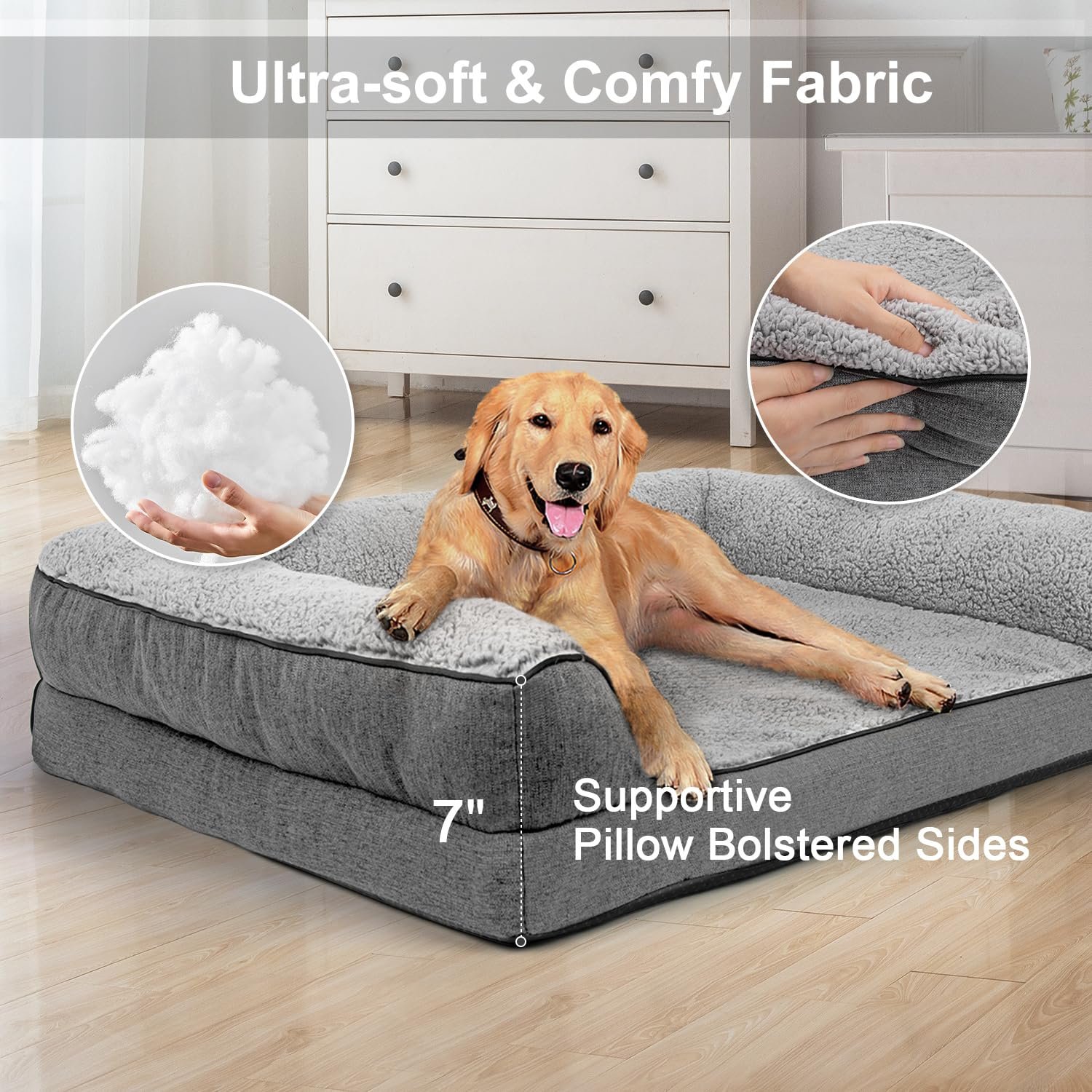
Ultra-soft & Comfy Fabric
Make sure your dog feels safe and comfortable at night.
Example:
- Designated Space: Provide a cozy crate or bed in a quiet area of the house. If your dog suffers from separation anxiety, consider placing their bed closer to your sleeping area.
- Familiar Items: Include a blanket or toy that smells like you to offer comfort.
- Noise Control: Use white noise machines or soft music to mask outside sounds that may disturb your dog.
Positive Reinforcement Training
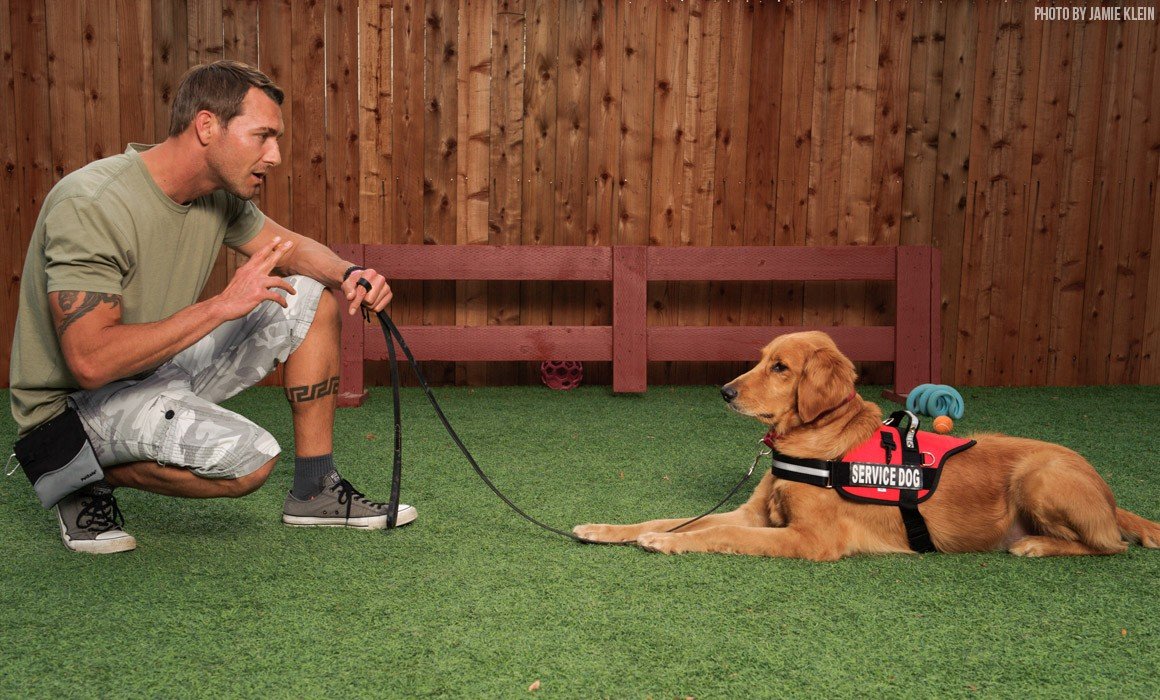
Positive Reinforcement Training
Training your dog to associate quiet behavior with rewards is an effective method.
Example:
- Ignore Barking: If your dog barks for attention, avoid reacting. Reward them only when they are quiet.
- Use a Command: Train your dog with a command like “Quiet.” Say the command calmly and reward your dog when they stop barking.
- Clicker Training: Use a clicker to mark the moment your dog stops barking, followed by a treat as a reward.
Increase Daytime Physical and Mental Stimulation

Daytime Physical and Mental Stimulation
A tired dog is a quiet dog. Ensuring your dog gets adequate exercise and mental enrichment during the day can significantly reduce nighttime barking.
Example:
- Interactive Toys: Provide puzzle feeders or treat-dispensing toys to keep their mind engaged.
- Daily Exercise: Depending on the breed, aim for at least 30 minutes to 2 hours of exercise each day.
- Training Sessions: Short, fun training sessions can tire your dog mentally and physically.
Address Anxiety and Stress
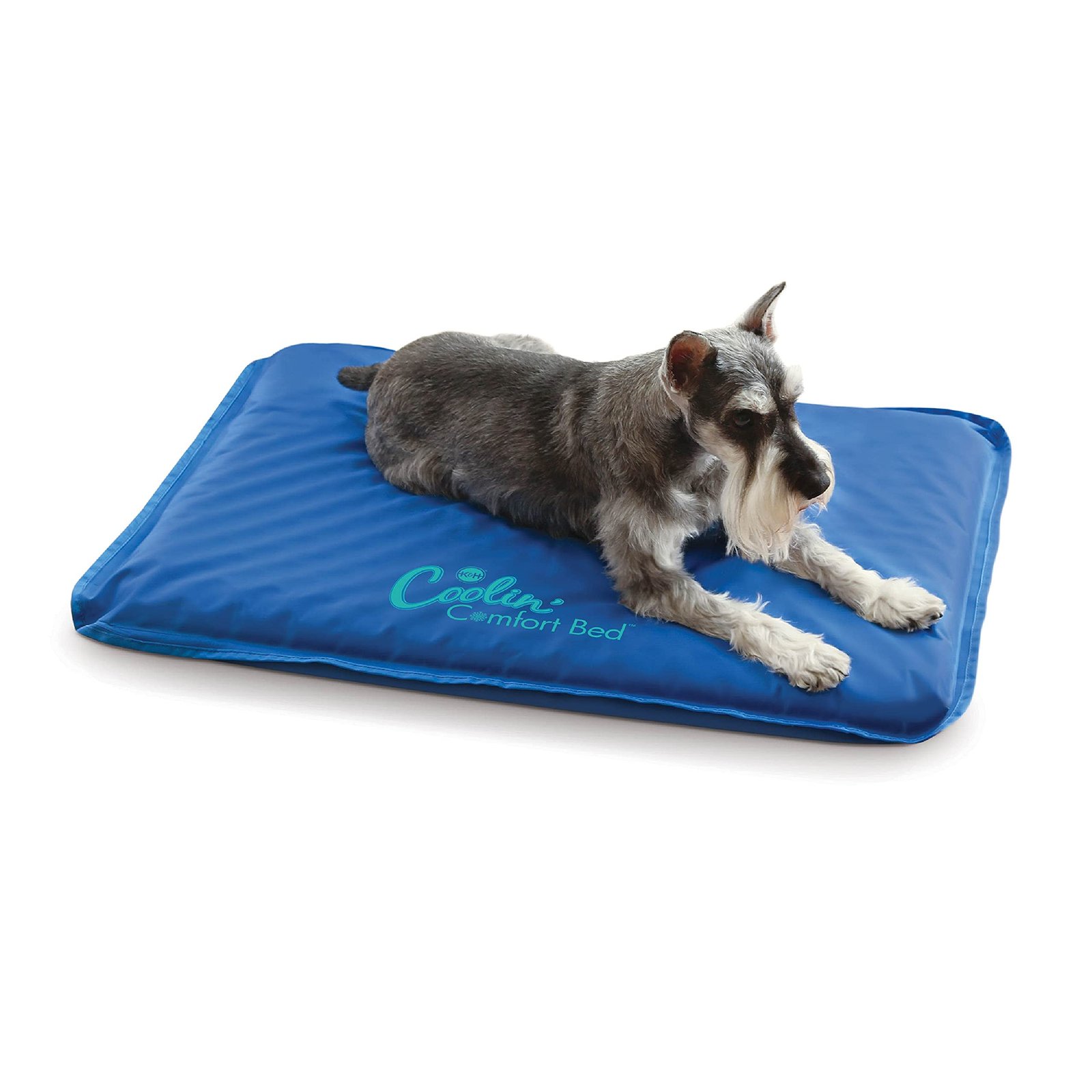
Comforting Products
If your dog’s barking is anxiety-driven, steps to reduce stress can be helpful.
Example:
- Comforting Products: Use calming sprays, collars, or diffusers with pheromones designed for dogs.
- Gradual Alone Time: Train your dog to feel secure being alone for short periods during the day.
- Professional Help: Consult a dog behaviorist if anxiety-related barking persists.
Limit External Stimuli

Limit External Stimuli
Reducing your dog’s exposure to nighttime distractions can minimize barking.
Example:
- Curtains or Blinds: Close them to block the view of outside movements.
- Soundproofing: Use thick curtains or soundproof panels to reduce noise.
- Timing Potty Breaks: Ensure your dog has a bathroom break before bedtime to avoid discomfort.
Seek Veterinary Advice When Needed
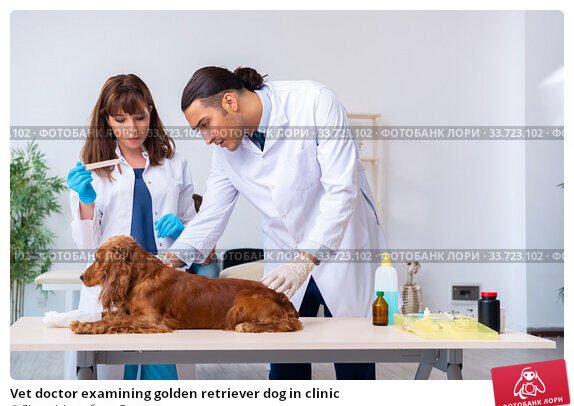
Picture cradit to the concerning water marks
If your dog’s barking is sudden or unusual, consult a veterinarian to rule out medical issues.
Example:
- Health Check-ups: Regular vet visits can identify underlying conditions like pain, ear infections, or cognitive decline in older dogs.
Closing Statement
Stopping nighttime barking requires patience and consistency. By understanding your dog’s needs and applying these best practices, you can create a peaceful environment for both your pet and your household. Remember, addressing the root cause and using positive reinforcement are key to long-term success.
FAQs
SMALL DOG BREEDS
”Choosing the Right Dog Breed: for Your Lifestyle”
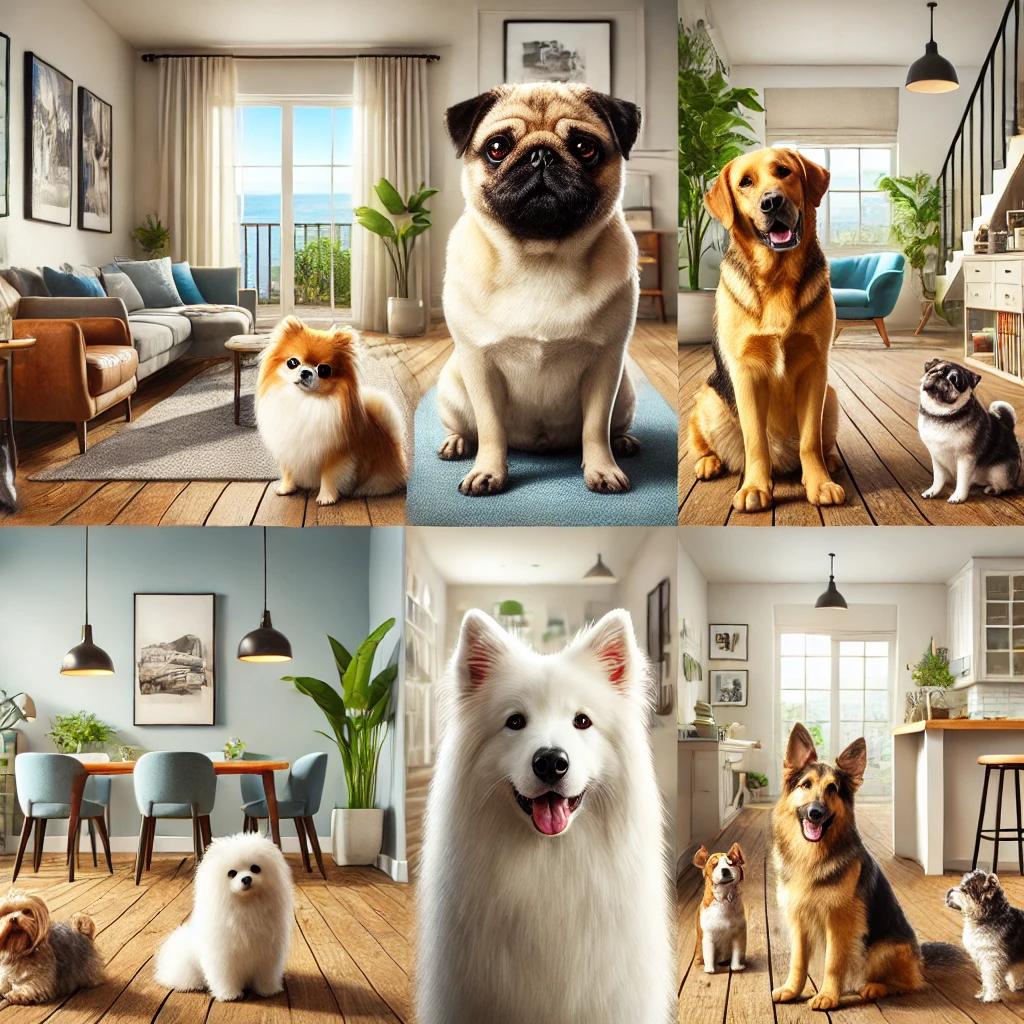
A Very Important Part of Choosing the Right Companion

Choosing the right dog breed is a crucial decision that affects both the owner and the dog. With hundreds of breeds available, selecting the best match for your lifestyle ensures a happy and healthy relationship. Whether you are looking for a high-energy companion or a low-maintenance pet, considering factors like living space, activity level, and personal preferences is essential.
For more information regarding 4 seasonal cxcercieses of all dog breeds recommended by the doctors and experts,you can visit our youtube channel:
Selecting the right dog breed is essential for ensuring a harmonious relationship between you and your pet. Your lifestyle, living space, and financial capacity all play a significant role in determining which breed suits you best. Whether you are a job holder, a businessperson, a student, or a homemaker, there is a perfect breed for everyone. This guide will help you make the best choice based on your financial position and daily routine.
Factors to Consider When Choosing a Dog Breed

1. Size and Living Space
The size of a dog significantly impacts its adaptability to different living environments.
- Small Breeds ( Chihuahua, French Bulldog, Pomeranian) – Ideal for apartments and small homes.
- Medium Breeds ( Border Collie, Cocker Spaniel, Beagle) – Suitable for both small homes and larger spaces.
- Large Breeds ( Labrador Retriever, Golden Retriever, German Shepherd) – Require more space, best suited for homes with yards.
2. Activity Level and Energy Requirements
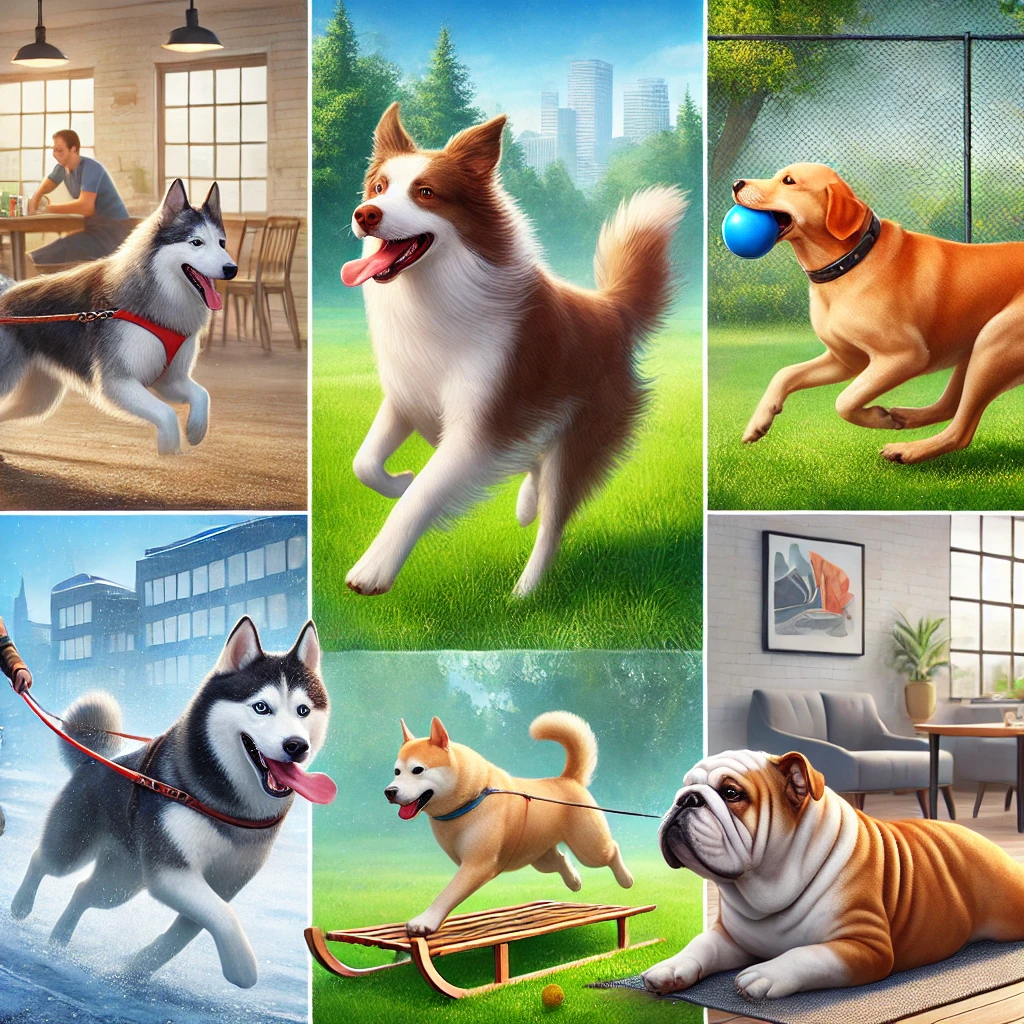
Some breeds require intense physical activity, while others are content with minimal exercise.
- High-Energy Dogs ( Siberian Husky, Australian Shepherd, Dalmatian) – Perfect for active individuals or families who enjoy outdoor activities.
- Moderate-Energy Dogs ( Boxer, Bulldog, Corgi) – Need regular exercise but adapt well to moderate activity levels.
- Low-Energy Dogs ( Basset Hound, Shih Tzu, Pug) – Best for those with a less active lifestyle or limited mobility.
3. Grooming and Maintenance Needs
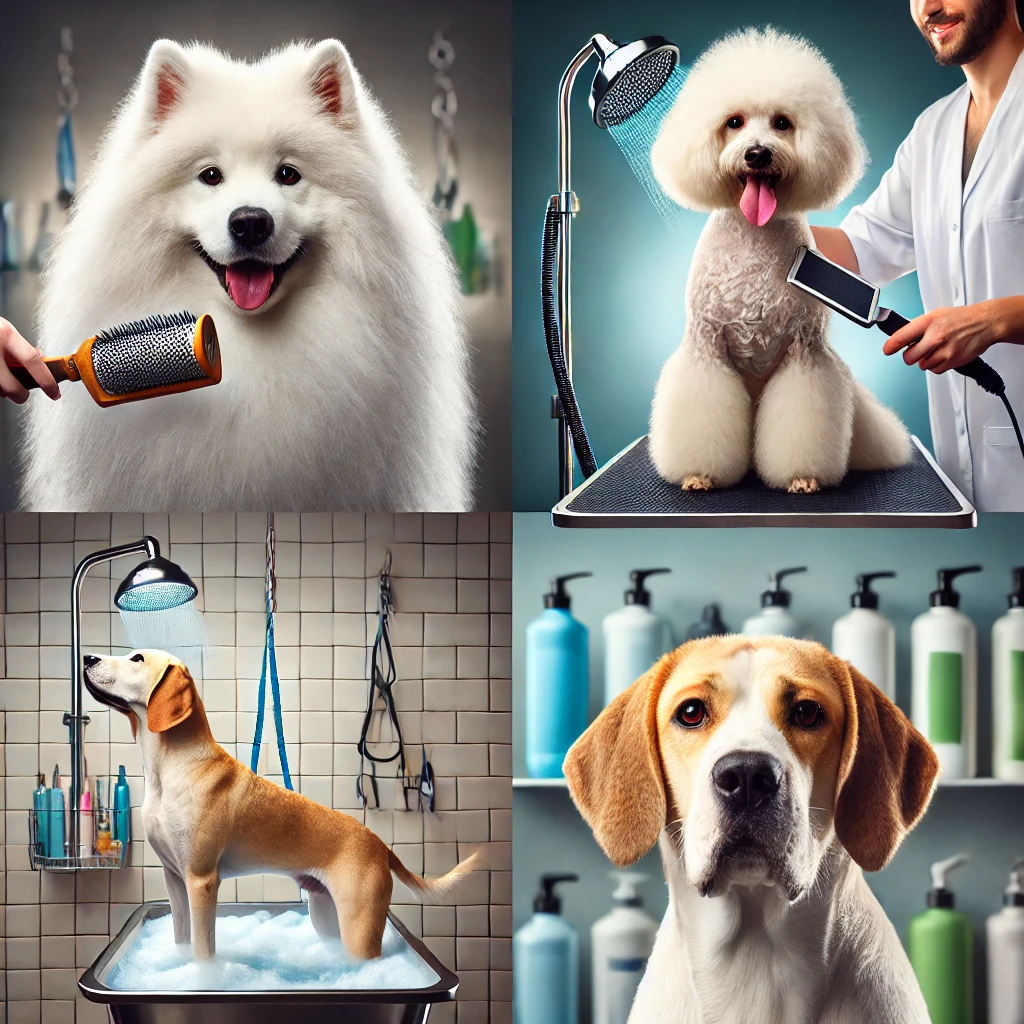
Different breeds have varied grooming requirements based on coat type.
- Low Maintenance ( Beagle, Doberman, Boxer) – Minimal grooming required.
- Moderate Maintenance (Golden Retriever, Cocker Spaniel, Border Collie) – Regular brushing and occasional grooming.
- High Maintenance (Poodle, Afghan Hound, Shih Tzu) – Require frequent grooming and coat care.
4. Temperament and Family Compatibility
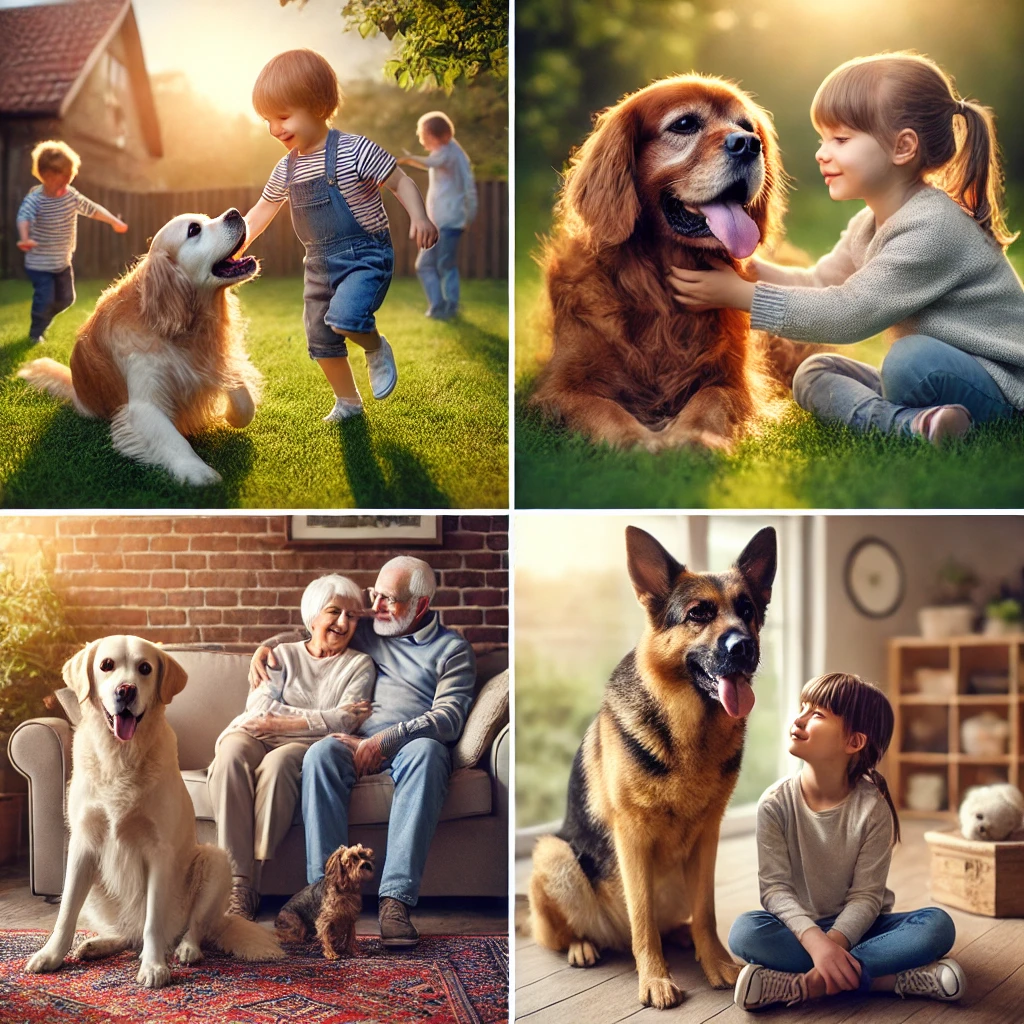
Understanding a breed’s temperament helps in choosing a dog that fits well with your household.
-
Great with Families (Labrador Retriever, Golden Retriever, Collie) – Friendly, affectionate, and good with children.
-
Independent Breeds ( Akita, Afghan Hound, Chow Chow) – Require experienced handling and training.
-
Protective Breeds ( Rottweiler, German Shepherd, Doberman) – Naturally alert and good for home security.
5. Trainability and Intelligence
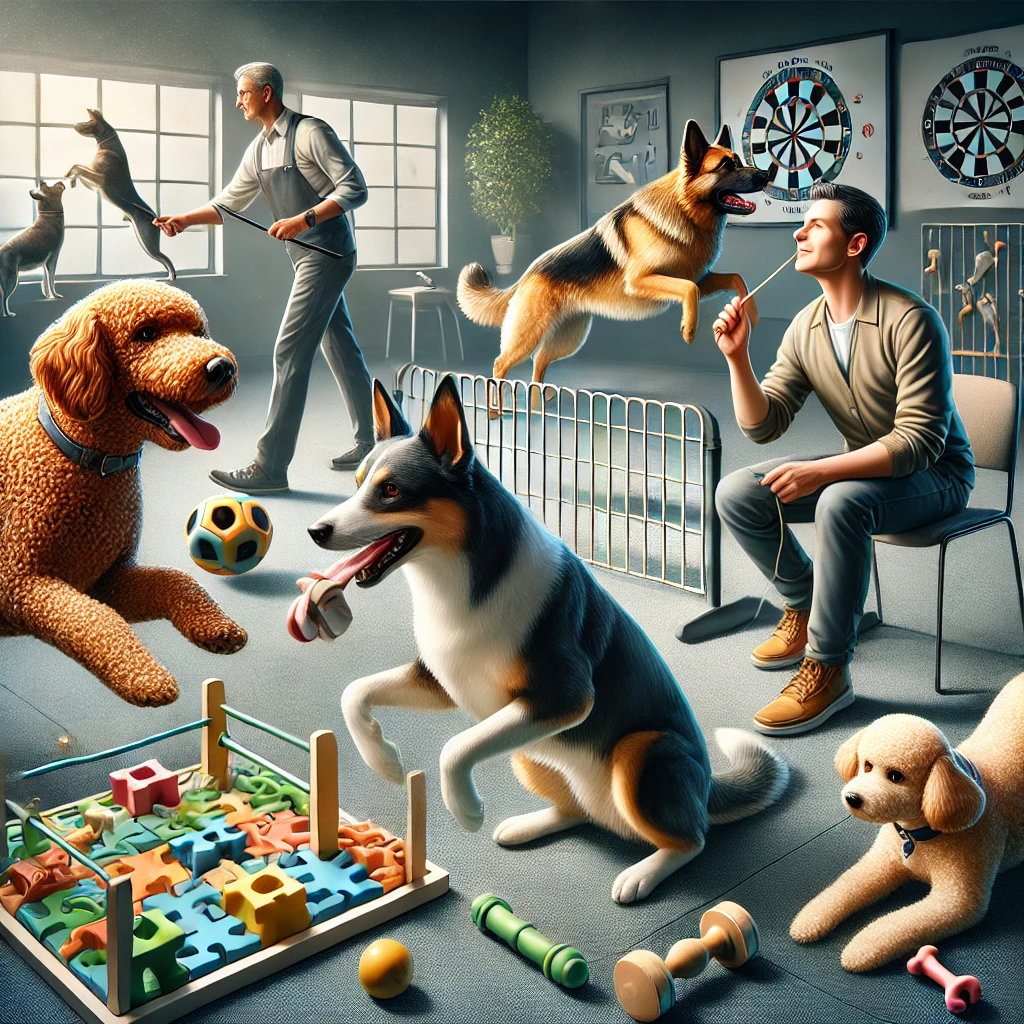
Some breeds are more eager to learn and easier to train than others.
-
Highly Trainable ( Border Collie, Poodle, German Shepherd) – Quick learners and excel in obedience training.
-
Moderately Trainable ( Beagle, Bulldog, Shiba Inu) – Can learn commands but may require patience.
-
Independent Thinkers (Afghan Hound, Basenji, Chow Chow) – Less eager to please, requiring consistent training.
Matching a Dog Breed to Your Lifestyle

For Active Individuals and Outdoor Enthusiasts
If you enjoy hiking, running, or outdoor adventures, consider breeds with high stamina and endurance.
-
Best choices: Siberian Husky, Border Collie, Labrador Retriever, Dalmatian
For Apartment Dwellers and City Living

Breeds that adapt well to small spaces and don’t require excessive exercise are ideal.
-
Best choices: French Bulldog, Cavalier King Charles Spaniel, Dachshund, Pug
For Families with Children
A family-friendly dog should be gentle, patient, and enjoy interaction.
-
Best choices: Golden Retriever, Labrador Retriever, Beagle, Boxer
For First-Time Dog Owners
Some breeds are easier to handle and more forgiving of training mistakes.
-
Best choices: Cavalier King Charles Spaniel, Labrador Retriever, Poodle, Bichon Frise
For Seniors or Low-Activity Owners

A low-energy, affectionate breed is best for companionship.
-
Best choices: Shih Tzu, Pomeranian, Basset Hound, Maltese
For Allergy Sufferers
Hypoallergenic breeds shed less and produce fewer allergens.
-
Best choices: Poodle, Schnauzer, Maltese, Portuguese Water Dog
Choosing the Right Dog Breed for Your Lifestyle
Selecting the right dog breed is essential for ensuring a harmonious relationship between you and your pet. Your lifestyle, living space, and financial capacity all play a significant role in determining which breed suits you best. Whether you are a job holder, a businessperson, a student, or a homemaker, there is a perfect breed for everyone. This guide will help you make the best choice based on your financial position and daily routine.
1. Job Holders Living in Apartments (Limited Salary)
For individuals working 9-to-5 jobs with limited salaries and living in apartments, a small breed is the best option. These dogs require minimal space, have lower food costs, and are easy to manage.
Best Breeds:
- Pug – Friendly, adaptable, and requires moderate exercise.
- French Bulldog – Low maintenance, affectionate, and apartment-friendly.
- Shih Tzu – Great for small spaces, but requires regular grooming.
- Chihuahua – Low feeding costs, small size, and minimal exercise needs.
2. Businessmen (High-Income & Large Living Spaces)

Businesspersons who have larger living spaces and a higher budget can afford to own bigger or more luxurious dog breeds. These dogs often require more space, food, and maintenance.
Best Breeds:
- Golden Retriever – Highly trainable, loving, and great with families.
- Labrador Retriever – Active, intelligent, and a great companion.
- Doberman Pinscher – Excellent guard dog, loyal, and protective.
- German Shepherd – Highly trainable, protective, and versatile.
- Siberian Husky – Requires large space and regular exercise; ideal for active owners.
3. Female Job Holders (Limited Salary & Apartment Living)

For working women who live in apartments, a low-maintenance dog that does not require extensive training or exercise is ideal.
Best Breeds:
- Maltese – Small, affectionate, and requires little space.
- Pomeranian – Active indoors, does not need large outdoor space.
- Cavalier King Charles Spaniel – Gentle, good-natured, and easy to manage.
- Miniature Schnauzer – Low shedding and apartment-friendly.
4. Female Businesswomen (High-Income & Large Homes)
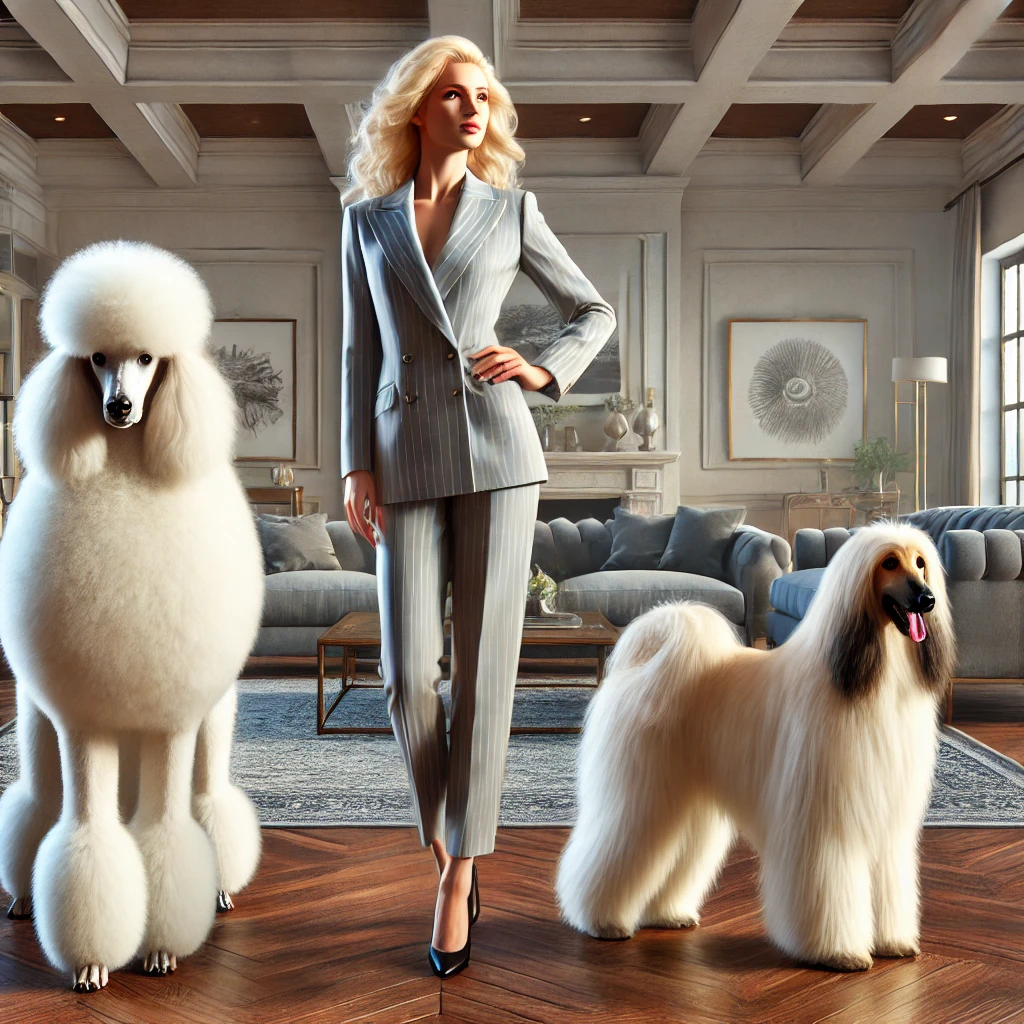
Women who run businesses and have a high budget can opt for luxury breeds that require proper maintenance and space.
Best Breeds:
- Poodle (Standard or Toy) – Elegant, intelligent, and hypoallergenic.
- Samoyed – Beautiful, affectionate, and needs regular grooming.
- Great Dane – Majestic, affectionate, and requires ample space.
- Afghan Hound – Stylish, independent, and requires grooming.
5. Homemakers (Stay-at-Home Ladies)

Housewives with time to take care of their pets can opt for affectionate and family-friendly breeds that require attention but fit well within a household setting.
Best Breeds:
- Beagle – Loyal, friendly, and great with children.
- Cocker Spaniel – Playful, affectionate, and family-oriented.
- Bichon Frise – Cheerful, hypoallergenic, and a great indoor companion.
- Shetland Sheepdog – Smart, obedient, and loves attention.
6. Students (Limited Budget & Space)
Students living in hostels or small apartments with limited budgets need breeds that are low-maintenance, small in size, and require minimal grooming.
Best Breeds:
- Dachshund – Compact, playful, and easy to maintain.
- Jack Russell Terrier – Energetic but does well in small spaces.
- Yorkshire Terrier – Low feeding costs, small size, and affectionate.
- Miniature Pinscher – Low-maintenance, playful, and independent.
7. College & University Students (Moderate Budget)
University students who have moderate budgets and are living in rented apartments need friendly and trainable dogs that adapt well to their routine.
Best Breeds:
- Border Collie – Intelligent and easy to train.
- Australian Shepherd – Active and good for those who love outdoor activities.
- Corgi – Social, adaptable, and compact.
- Boston Terrier – Smart, playful, and great for small apartments.
FAQs: Choosing the Right Dog Breed for Your Lifestyle
Selecting the perfect dog breed involves more than just falling for a cute face—it’s about matching energy levels, space requirements, and personality to your daily life. Below are the most common questions (and answers!) to help you find your ideal canine companion.
1. How Do I Know Which Dog Breed Is Right for Me?
Consider these factors:
Activity Level – Do you want a jogging buddy or a couch potato?
Living Space – Apartment-friendly vs. large-yard-needed breeds.
Grooming Commitment – High-maintenance coats vs. low-shedding breeds.
Time Availability – Some breeds need constant companionship; others are more independent.
Family Needs – Kid-friendly, hypoallergenic, or good with other pets?
Tip: Take online breed quizzes (AKC, Petfinder) for personalized suggestions.
2. What Are the Best Dog Breeds for Apartment Living?
Smaller, quieter, and lower-energy breeds tend to thrive in apartments:
- French Bulldog
- Cavalier King Charles Spaniel
- Shih Tzu
- Greyhound (surprisingly lazy indoors!)
- Boston Terrier
Avoid: Extremely vocal (Beagles) or high-energy breeds (Border Collies) unless you can provide ample exercise.
3. Which Breeds Are Best for Active Owners?
If you love hiking, running, or outdoor adventures, consider:
- Australian Shepherd
- Labrador Retriever
- Siberian Husky
- Vizsla
- Jack Russell Terrier
Warning: These breeds can become destructive if under-exercised!
4. What Are the Best Low-Maintenance Dog Breeds?
For minimal grooming and moderate energy:
- Chihuahua (short-haired)
- Dachshund
- Whippet
- Basenji (self-cleaning, like a cat!)
- Rat Terrier
Note: “Low-maintenance” doesn’t mean zero effort—all dogs need love, training, and vet care.
5. Which Breeds Are Best for Families with Kids?
Look for patient, gentle, and sturdy breeds:
- Golden Retriever
- Labrador Retriever
- Beagle
- Boxer
- Newfoundland (gentle giants!)
Avoid: Fragile toy breeds (e.g., Italian Greyhounds) or aggressive guard dogs if you have small children.
6. What Are the Best Hypoallergenic Dog Breeds?
For allergy sufferers, consider low-shedding breeds:
- Poodle (all sizes)
- Bichon Frise
- Portuguese Water Dog
- Schnauzer
- Maltese
Myth Buster: No dog is 100% hypoallergenic, but these produce less dander.
7. Should I Get a Puppy or an Adult Dog?
| Puppy | Adult Dog |
|---|---|
| Requires training (potty, obedience) | Often already trained |
| High energy, needs socialization | Calmer, established personality |
| Longer time commitment | May adapt quicker to your routine |
| Cute but destructive phase | Known behavior traits |
Best for first-time owners? Many recommend adopting an adult dog for an easier transition.
8. How Do I Find a Reputable Breeder vs. Adopting?
Reputable Breeder:
- Health-tests parents, provides AKC papers, allows meet-ups.
- Avoids “puppy mills” (red flag: multiple litters always available).
Adoption:
- Shelters and rescues often have mixed breeds (healthier genetic diversity!).
- Adult dogs’ personalities are already known.
Ethical Choice: Consider breed-specific rescues if you want a purebred without supporting breeding mills.
9. What If I Fall in Love with a Breed That Doesn’t Fit My Lifestyle?
- Be honest: Can you adjust your routine (more walks, grooming)?
- Compromise: Example: Love Huskies but live in a hot climate? Consider a mutt with Husky looks but less demanding needs.
- Foster First – Try before committing!
10. Where Can I Research Breed Temperaments & Health Issues?
Trusted Resources:
- AKC.org (Breed profiles)
- Your local vet (Breed-specific advice)
- Dog forums (Real-owner experiences)
- Meet the breed – Visit dog shows or breed meetups.
Closing Statement
The “perfect” dog is the one whose needs align with your lifestyle. Whether you adopt a playful mutt or a pedigreed pup, the right match means years of happiness for both of you!
Selecting the right dog breed is crucial for a happy and healthy companionship. Whether you are a job holder, a businessperson, a homemaker, or a student, there is a perfect breed to match your lifestyle and financial capability. By considering factors such as living space, budget, and time availability, you can ensure that your furry friend fits seamlessly into your life.
For more expert dog care tips, visit DogsReader and follow us on our social media platforms!
DogsReader – Your Trusted Canine Companion Guide
For more expert insights on dog breeds and pet care, visit DogsReader! Stay connected with us on Facebook and Instagram for the latest updates.
SMALL DOG BREEDS
How Cold is Too Cold for a Dog:
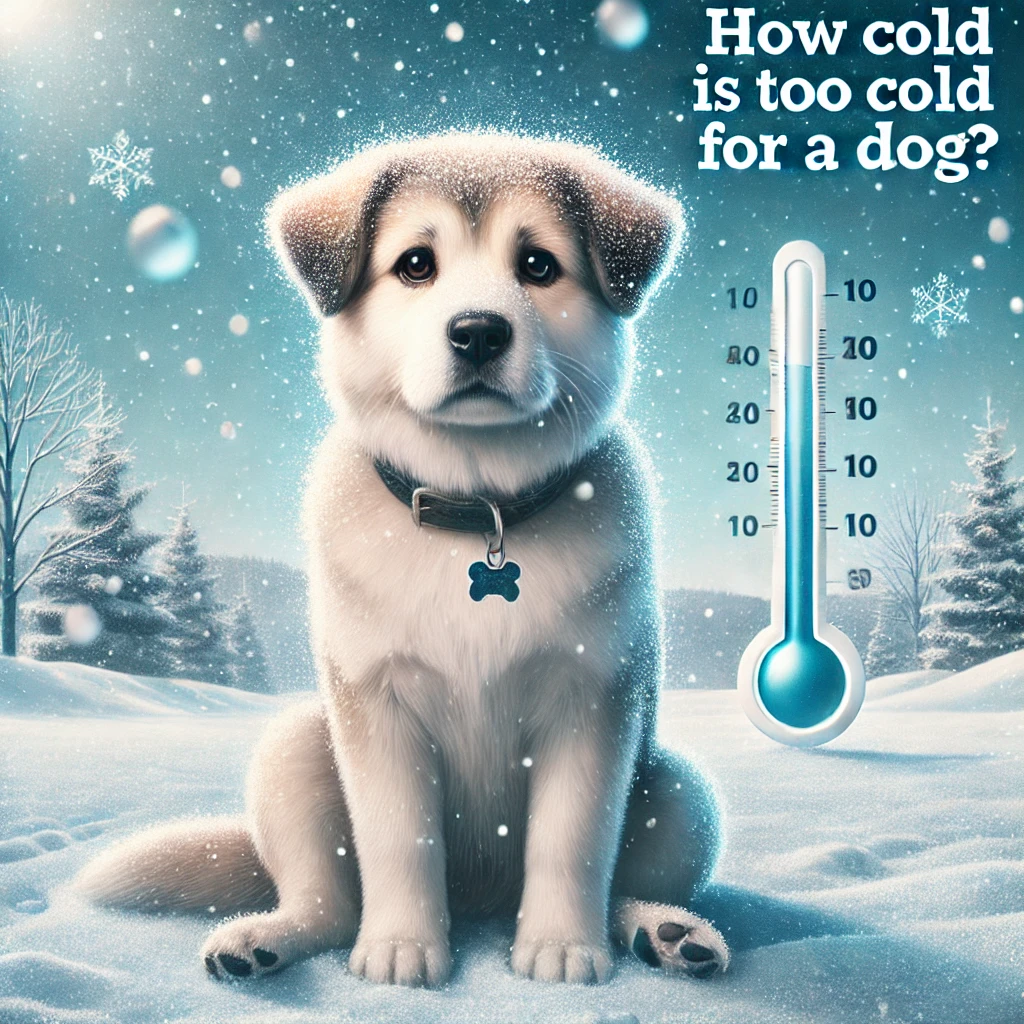
A Comprehensive Guide to Keeping Your Pup Safe in Winter
How Cold is Too Cold for a Dog: As temperatures drop, many dog owners wonder: How cold is too cold for a dog? While some dogs thrive in chilly weather, others are more sensitive to the cold and can suffer from hypothermia, frostbite, or other health issues. Understanding your dog’s tolerance for cold weather is essential to keeping them safe and comfortable during winter. This article covers everything you need to know about cold weather safety for dogs, including breed-specific considerations, signs of cold stress, and tips for protecting your furry friend.
Factors That Determine a Dog’s Cold Tolerance
Not all dogs handle cold weather the same way. Several factors influence how well your dog can tolerate the cold:
- Breed and Size:
- Cold-Weather Breeds:
- Huskies, Malamutes, and Saint Bernards have thick double coats and are built for cold climates.
- Small or Short-Haired Breeds:
- Chihuahuas, Greyhounds, and Dachshunds are more vulnerable to the cold.
- Coat Type:
- Dogs with thick, double-layered coats are better insulated against the cold.
- Short-haired or hairless dogs (e.g., Chinese Crested) need extra protection.
- Age and Health:
- Puppies, senior dogs, and dogs with health conditions (e.g., arthritis) are more sensitive to cold temperatures.
- Acclimatization:
- Dogs accustomed to cold weather handle it better than those used to warmer climates.
How Cold is Too Cold for a Dog?

The answer depends on your dog’s breed, size, and health. Here’s a general guideline:
| Temperature Range | Risk Level | Recommendations |
|---|---|---|
| 45°F (7°C) and above | Low Risk | Most dogs are comfortable. Monitor small or short-haired breeds. |
| 32°F (0°C) to 45°F (7°C) | Moderate Risk | Limit time outdoors. Provide coats for small or short-haired dogs. |
| 20°F (-6°C) to 32°F (0°C) | High Risk | Short walks only. Use protective gear like coats and boots. |
| Below 20°F (-6°C) | Extreme Risk | Avoid prolonged exposure. Frostbite and hypothermia are likely. |
Signs Your Dog is Too Cold
Watch for these signs that your dog is feeling the cold:
- Shivering: The most obvious sign of discomfort.
- Whining or Anxiety: Your dog may want to go inside.
- Slow Movements: Cold can make joints stiff and movement difficult.
- Paw Lifting: Indicates that the ground is too cold for their paws.
- Pale or Gray Gums: A sign of hypothermia or frostbite.
If you notice any of these signs, bring your dog indoors immediately and warm them up gradually.
Breed-Specific Considerations
Different breeds have different cold tolerances:
1. Cold-Weather Breeds (e.g., Siberian Husky, Alaskan Malamute)
- Can handle temperatures as low as -20°F (-29°C).
- Still need monitoring for frostbite on ears and paws.
2. Small or Toy Breeds (e.g., Chihuahua, Toy Poodle)
- At risk in temperatures below 45°F (7°C).
- Require sweaters or coats for outdoor walks.
3. Short-Haired Breeds (e.g., Greyhound, Boxer)
- Vulnerable in temperatures below 32°F (0°C).
- Need protective gear like coats and boots.
4. Senior Dogs and Puppies
- Less able to regulate body temperature.
- Limit outdoor time in cold weather.
How to Protect Your Dog in Cold Weather
- Dress Them Warmly:
-
- Use dog coats or sweaters for small, short-haired, or senior dogs.
- Protect paws with booties to prevent frostbite and exposure to salt or ice melt.
- Limit Outdoor Time:
-
- Shorten walks and avoid prolonged exposure to cold.
- Provide indoor exercise and mental stimulation.
- Create a Warm Space:
-
- Ensure your dog has a warm, draft-free place to sleep indoors.
- Use heated pet beds or blankets for extra warmth.
- Check Paws Regularly:
-
- Wipe paws after walks to remove ice, salt, or chemicals.
- Apply paw balm to prevent cracking and dryness.
- Adjust Their Diet:
-
- Dogs burning extra energy to stay warm may need more calories.
- Consult your vet before making dietary changes.
Dangers of Cold Weather for Dogs
- Hypothermia:
-
- Occurs when a dog’s body temperature drops dangerously low.
- Symptoms include shivering, lethargy, and shallow breathing.
- Frostbite:
-
- Affects extremities like ears, paws, and tails.
- Signs include pale or gray skin, swelling, and blisters.
- Chemical Exposure:
-
- Ice melt and antifreeze are toxic to dogs.
- Rinse your dog’s paws after walks to remove chemicals.
What to Do if Your Dog Gets Too Cold
- Bring Them Indoors: Move your dog to a warm, dry place.
- Wrap Them in Blankets: Use warm (not hot) blankets to raise their body temperature.
- Offer Warm Water: Provide lukewarm water to drink.
- Contact Your Vet: If symptoms of hypothermia or frostbite persist, seek immediate veterinary care.
Closing Statement
Understanding how cold is too cold for your dog is crucial for their safety and comfort during winter. By considering your dog’s breed, size, and health, you can take the necessary steps to protect them from the cold. Whether it’s dressing them in a cozy sweater, limiting outdoor time, or providing a warm indoor space, your dog relies on you to keep them safe during the chilly months. Stay vigilant, watch for signs of cold stress, and enjoy the winter season with your furry friend!
Frequently Asked Questions (FAQs) About Cold Weather Safety for Dogs
Below are detailed answers to common questions about how cold is too cold for dogs and how to keep them safe during winter.
1. How cold is too cold for dogs?
It depends on your dog’s breed, size, and health. Generally:
- 45°F (7°C) and above: Safe for most dogs.
- 32°F (0°C) to 45°F (7°C): Risky for small, short-haired, or senior dogs.
- Below 20°F (-6°C): Dangerous for all dogs; avoid prolonged exposure.
2. Can dogs get hypothermia?
Yes, dogs can develop hypothermia if exposed to cold temperatures for too long. Symptoms include shivering, lethargy, and shallow breathing. Immediate warming and veterinary care are essential.
3. What are the signs that my dog is too cold?
Signs include:
- Shivering
- Whining or anxiety
- Slow movements or stiffness
- Lifting paws off the ground
- Pale or gray gums
4. Do dogs need coats in winter?
Small, short-haired, or senior dogs benefit from coats or sweaters in cold weather. Cold-weather breeds like Huskies usually don’t need extra layers.
5. How can I protect my dog’s paws in winter?
- Use dog booties to protect against cold, ice, and chemicals.
- Apply paw balm to prevent cracking.
- Wipe paws after walks to remove ice, salt, or antifreeze.
6. Can dogs get frostbite?
Yes, frostbite can affect a dog’s ears, paws, and tail. Signs include pale or gray skin, swelling, and blisters. Seek veterinary care if you suspect frostbite.
7. How long can dogs stay outside in the cold?
It depends on the temperature and your dog’s breed:
- Above 45°F (7°C): Most dogs can stay outside for extended periods.
- Below 32°F (0°C): Limit outdoor time to 10-15 minutes.
- Below 20°F (-6°C): Only allow quick bathroom breaks.
8. Are some breeds more cold-tolerant than others?
Yes, cold-weather breeds like Huskies and Malamutes are more cold-tolerant, while small or short-haired breeds like Chihuahuas and Greyhounds are more vulnerable.
9. Can puppies and senior dogs handle the cold?
Puppies and senior dogs are less able to regulate their body temperature and are more sensitive to the cold. Limit their exposure and provide extra warmth.
10. What should I do if my dog gets too cold?
- Bring them indoors immediately.
- Wrap them in warm blankets.
- Offer lukewarm water to drink.
- Contact your vet if symptoms of hypothermia or frostbite persist.
11. Are heated dog beds safe?
Yes, heated dog beds are safe if used correctly. Choose beds with chew-resistant cords and automatic shut-off features.
12. Can dogs sleep outside in winter?
It’s not recommended. Even cold-weather breeds need a warm, dry shelter if they sleep outside. However, it’s safer to bring all dogs indoors during winter.
13. How can I exercise my dog in cold weather?
- Shorten walks and avoid icy or snowy areas.
- Provide indoor exercise like fetch or puzzle toys.
- Visit indoor dog parks or playdates.
14. Are ice melt and antifreeze dangerous for dogs?
Yes, both are toxic. Ice melt can irritate paws, and antifreeze is deadly if ingested. Rinse your dog’s paws after walks and keep antifreeze out of reach.
15. Should I adjust my dog’s diet in winter?
Dogs burning extra energy to stay warm may need more calories. Consult your vet before making dietary changes.
16. Can dogs wear boots in winter?
Yes, boots protect paws from cold, ice, and chemicals. Introduce them gradually to ensure your dog is comfortable.
17. How can I tell if my dog is enjoying the snow?
Signs your dog is enjoying the snow include:
- Playful behavior (running, digging).
- Wagging tail and relaxed body language.
- No signs of shivering or discomfort.
18. What temperature is too cold for small dogs?
Small dogs are at risk in temperatures below 45°F (7°C). Provide coats and limit outdoor time in colder weather.
19. Can dogs get sick from being wet in the cold?
Yes, wet fur loses its insulating properties, increasing the risk of hypothermia. Dry your dog thoroughly after they get wet.
20. How can I create a warm space for my dog indoors?
- Provide a cozy bed in a draft-free area.
- Use blankets or a heated pet bed.
- Keep the room temperature comfortable.
SMALL DOG BREEDS
How to Draw a Dog : Latest
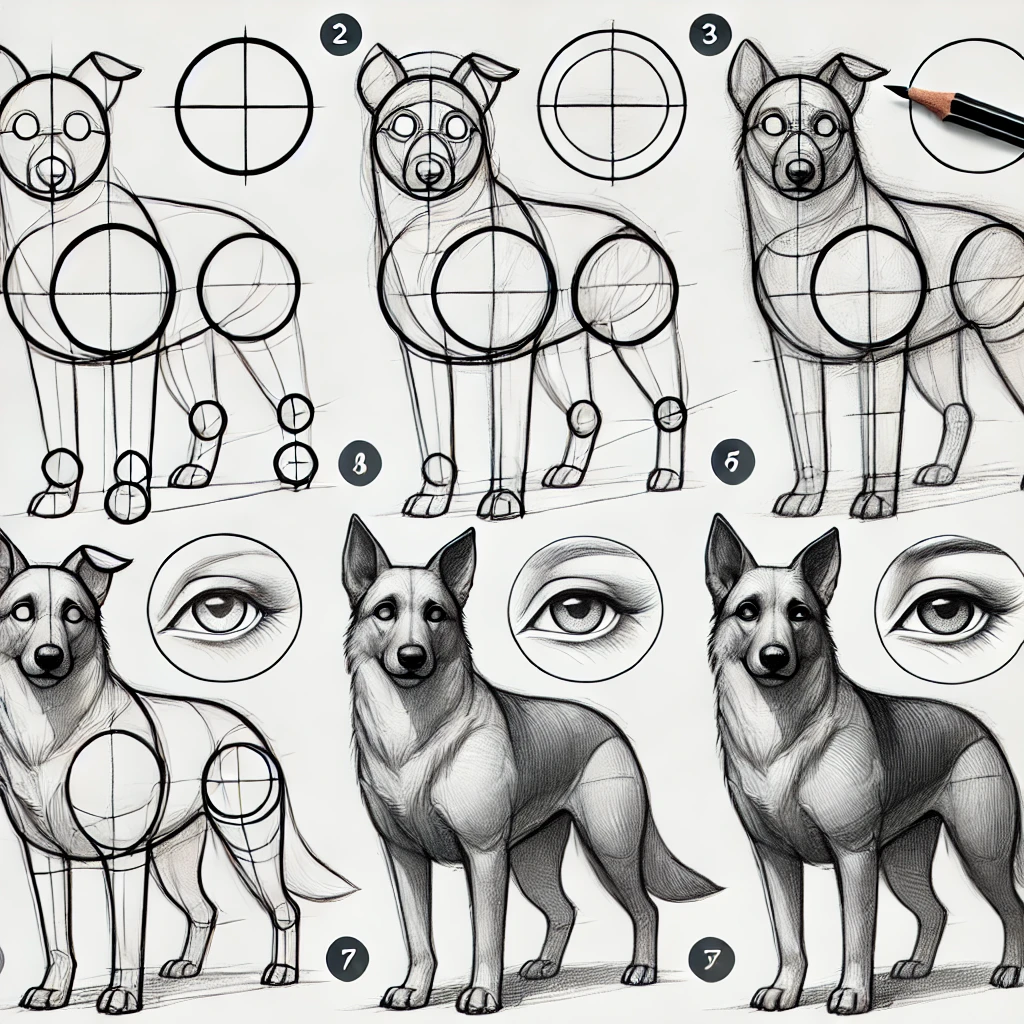
Step-by-Step Guide 🐶✏️
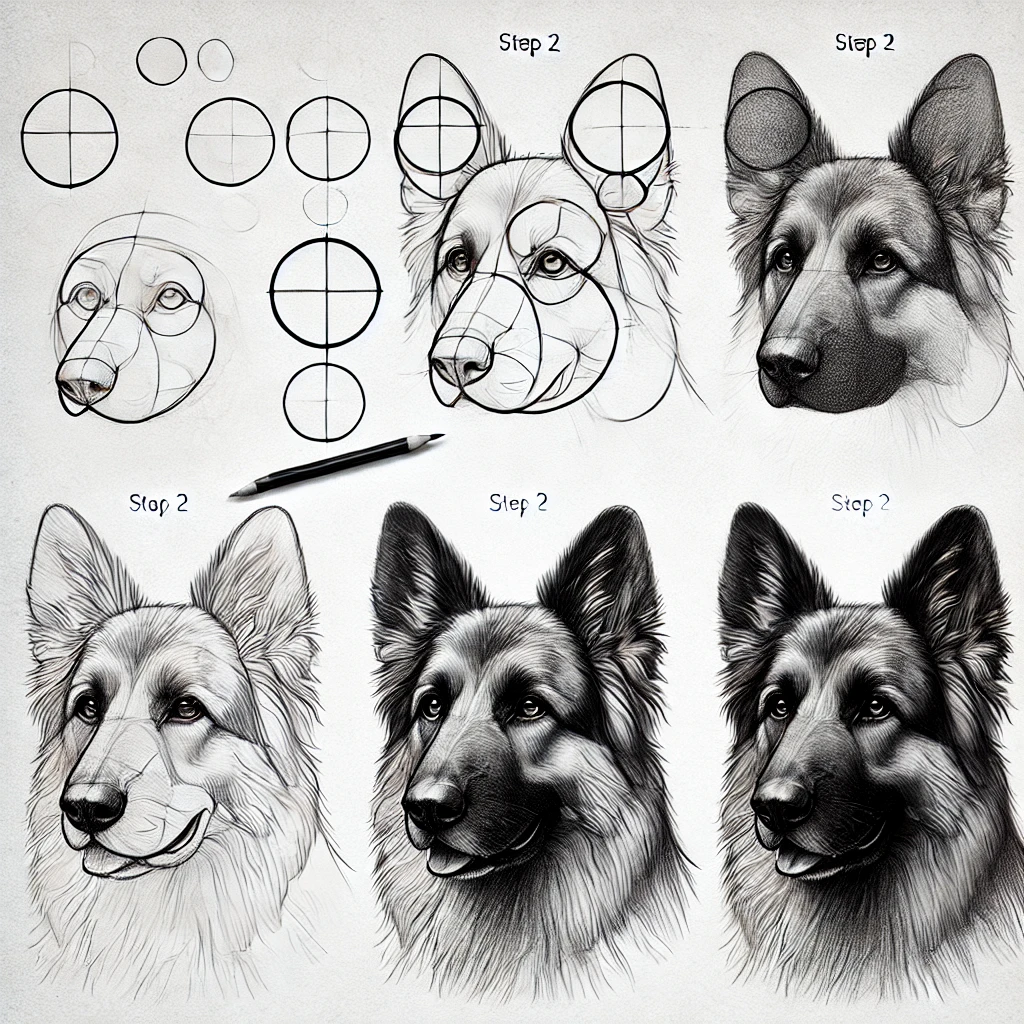

How to Draw a Dog : Latest Drawing a dog is an exciting creative journey. This guide takes inspiration from Wacom’s structured method but adds more artistic depth and realism! You’ll learn to sketch, refine, and create a masterpiece with text + drawing integration. 🎨
For more information regarding 4 seasonal cxcercieses of all dog breeds recommended by the doctors and experts,you can visit our youtube channel:
🖌️ Step 1: Sketching the Basic Framework
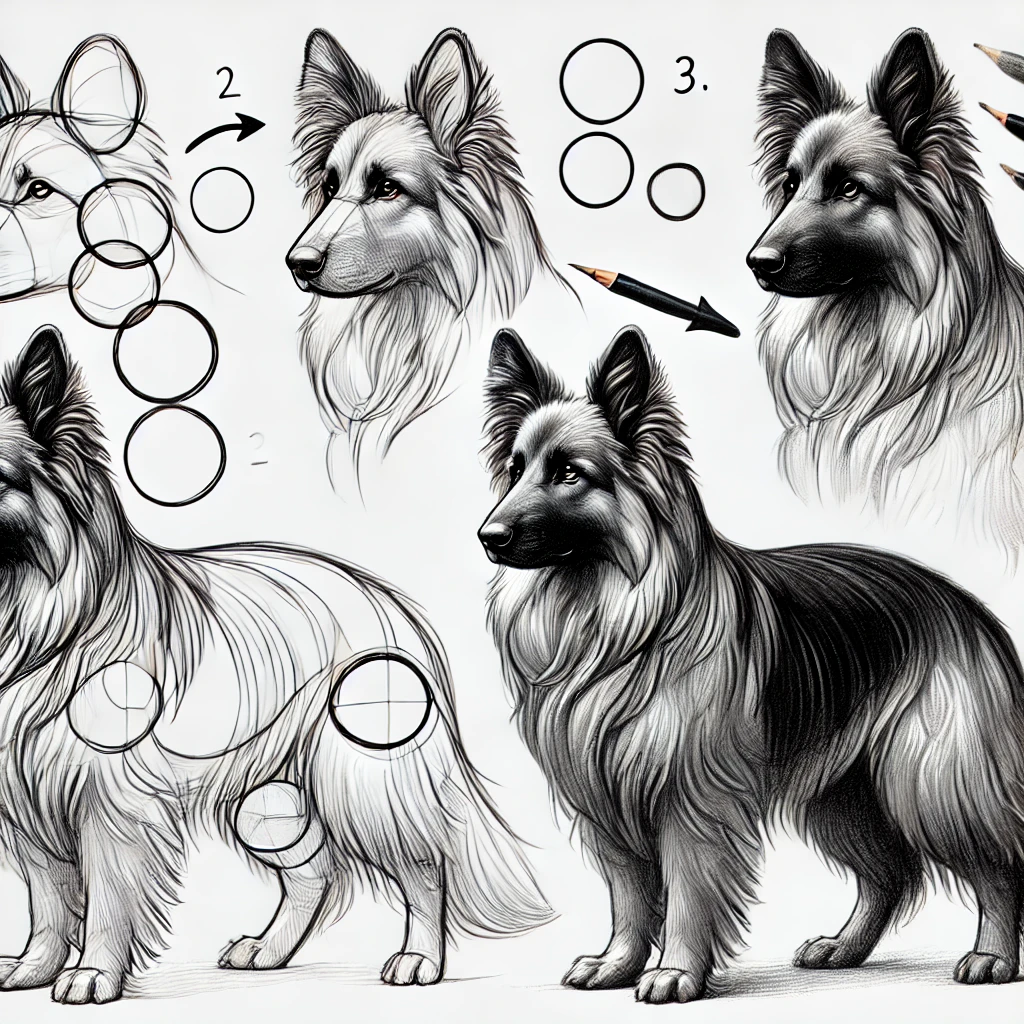
Start with simple geometric shapes to form the structure of the dog:
🟢 Head: Draw a circle for the head. 🟢 Body: Add an oval for the chest and another for the hindquarters. 🟢 Guidelines: Lightly sketch a vertical and horizontal cross in the head circle to map out facial features. 🟢 Legs & Tail: Use cylinder shapes for legs and a curved line for the tail.
➡️ This step is crucial as it lays the foundation! ✏️
✍️ Step 2: Refining the Silhouette
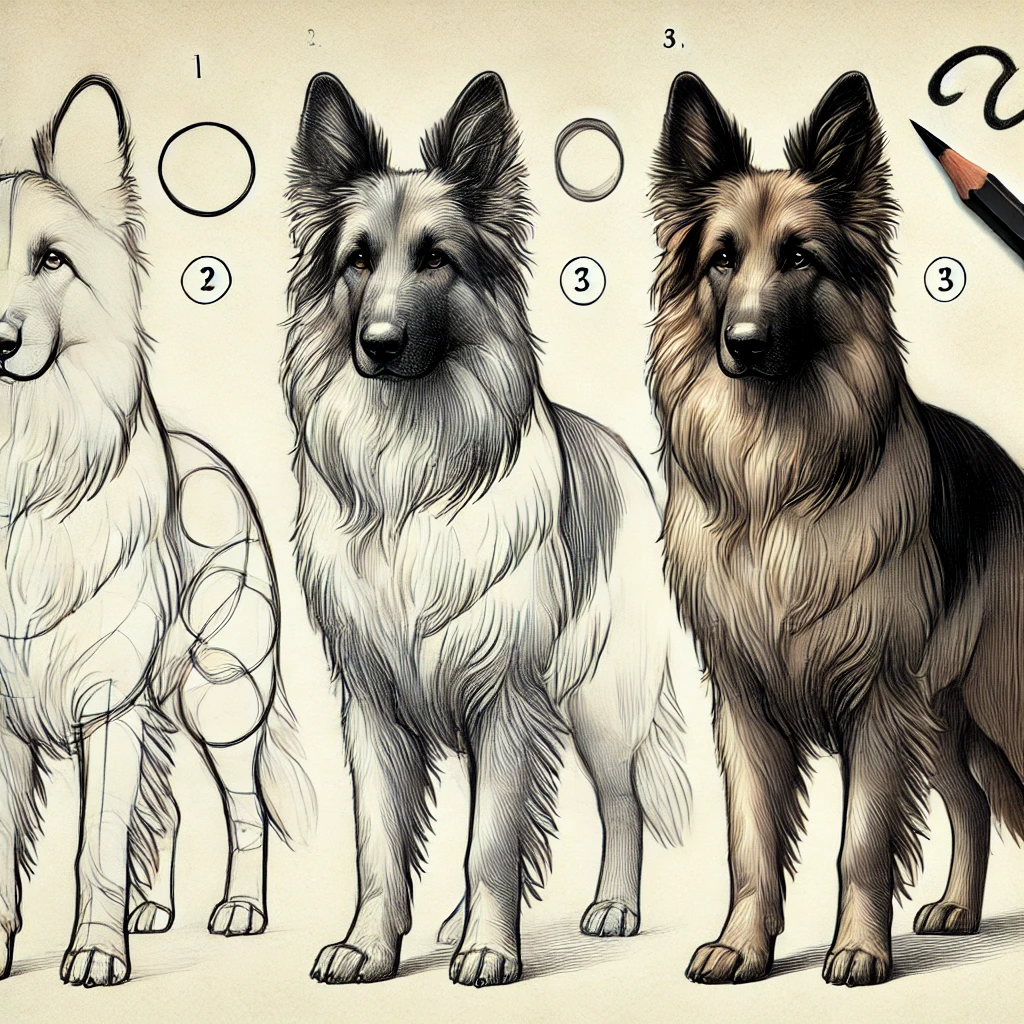
Now, let’s transform those basic shapes into a dog’s actual form:
- Outline the snout and jawline by extending the head circle forward.
- Define the ears (floppy or pointed, depending on the breed).
- Refine the body curves to connect the chest and hind area smoothly.
- Sketch the paws with rounded shapes at the bottom of the legs.
🔍 Tip: Use light strokes so you can erase mistakes easily! 🖊️
👀 Step 3: Facial Features & Details
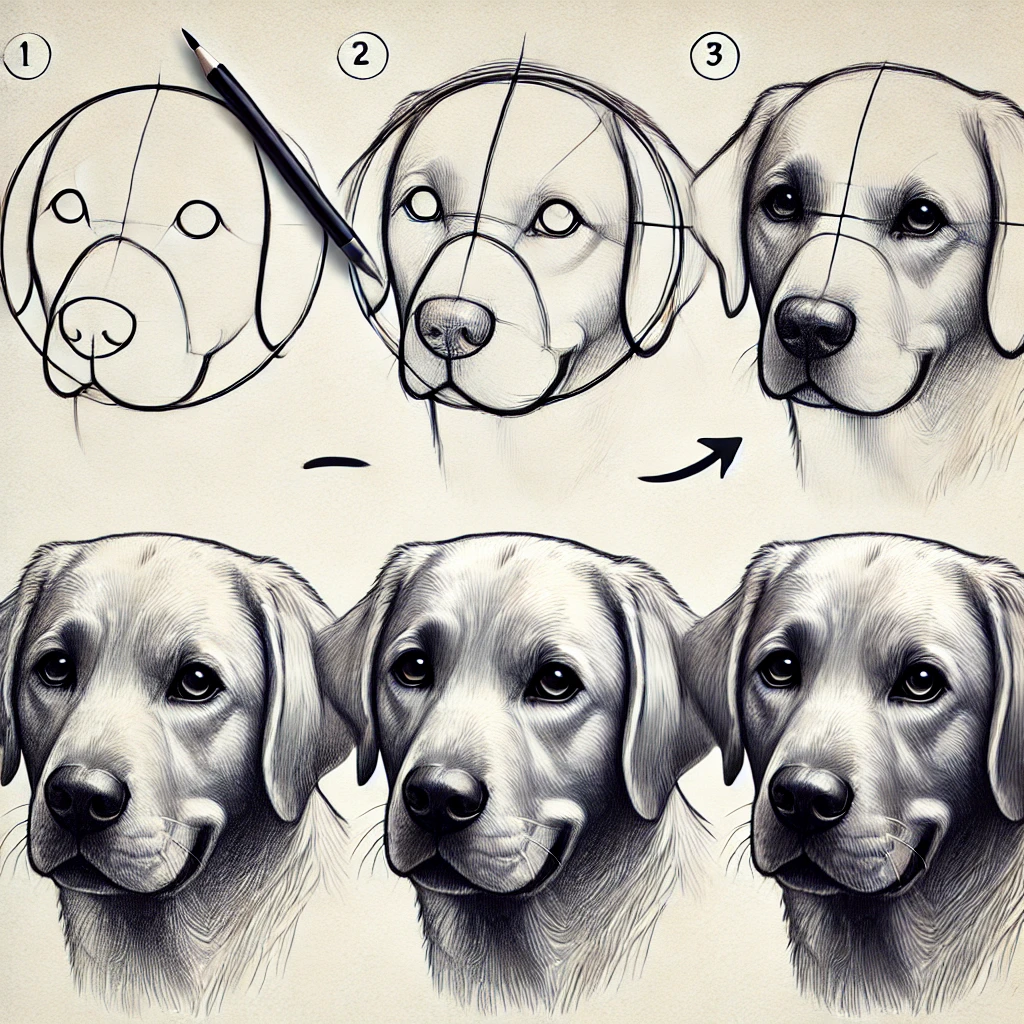
Time to give your dog some personality! 🐕
🎯 Eyes: Draw almond-shaped eyes with small pupils and highlights for realism. 🎯 Nose: Add a small rounded shape with tiny nostrils. 🎯 Mouth: A simple curved line for a gentle smile or open mouth for a playful look. 🎯 Ears: Shape them according to breed—floppy, upright, or rounded.
🔹 Dogs’ expressions are key to making the drawing lively! 🖌️
🖊️ Step 4: Adding Fur Texture & Depth
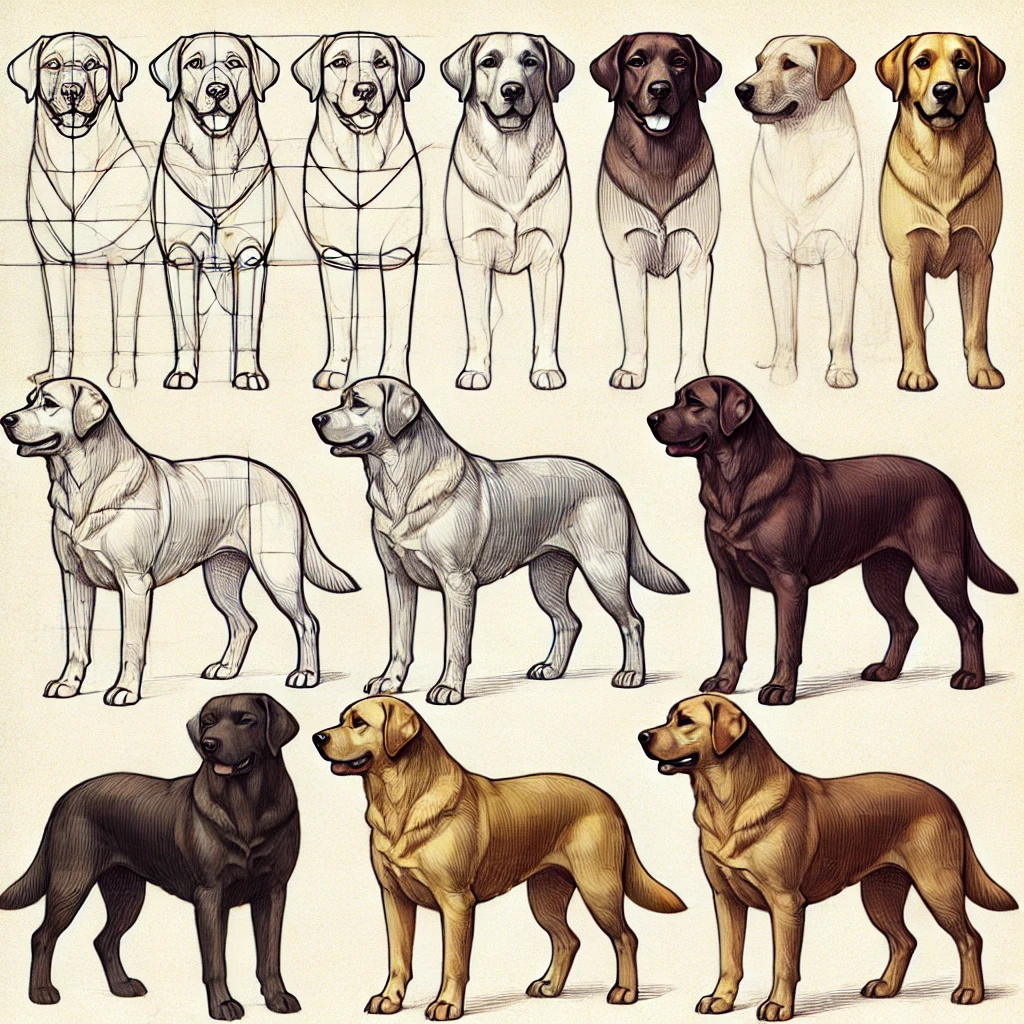
1️⃣ Short Hair: Use short, delicate pencil strokes to create soft fur. 2️⃣ Long Hair: Layer strokes in flowing motions to simulate fluffy textures. 3️⃣ Shading: Darken areas under the ears, neck, and legs to add depth. 4️⃣ Contrast: Erase some areas slightly to create highlights.
✏️ Use a blending stump for smooth shading! 🖍️
🎨 Step 5: Realistic Dog Drawing Section
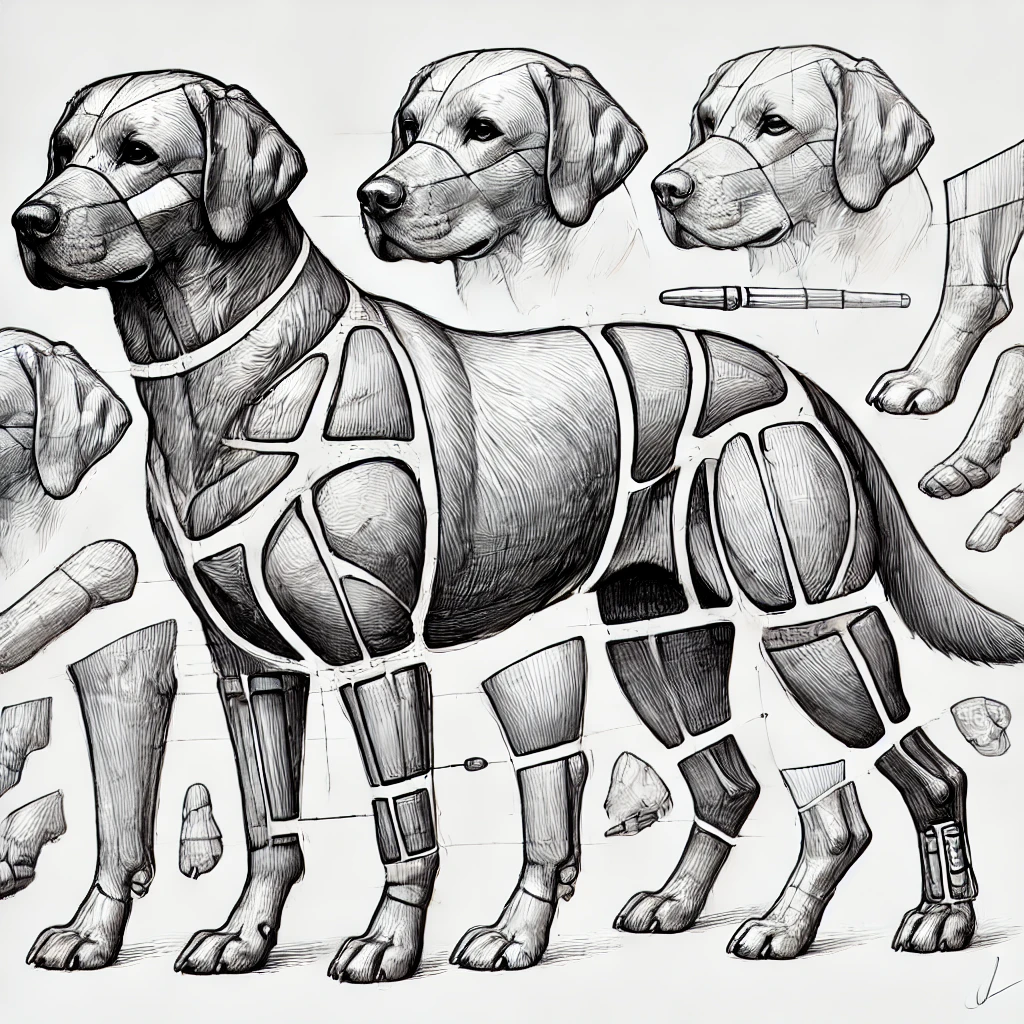
If you want a hyper-realistic result, here’s what to do:
✅ Fine Details: Focus on small elements like fur strands, whiskers, and paw pads. ✅ Layered Shading: Use cross-hatching and smudging techniques to create rich textures. ✅ Reflective Eyes: Add bright highlights for glossy, soulful eyes. ✅ Final Touches: Use an eraser to highlight fur sections and enhance realism.
🐕🦺 This is what makes your drawing stand out from a simple sketch! ✨
🖍️ Step 6: Optional Inking & Coloring

- Outline your final sketch with a fine liner for clarity.
- Use colored pencils or markers for a vibrant touch.
- Blend colors gradually for a soft, natural effect.
🎭 This step enhances your drawing’s depth and visual impact!
🌟 Closing Statement
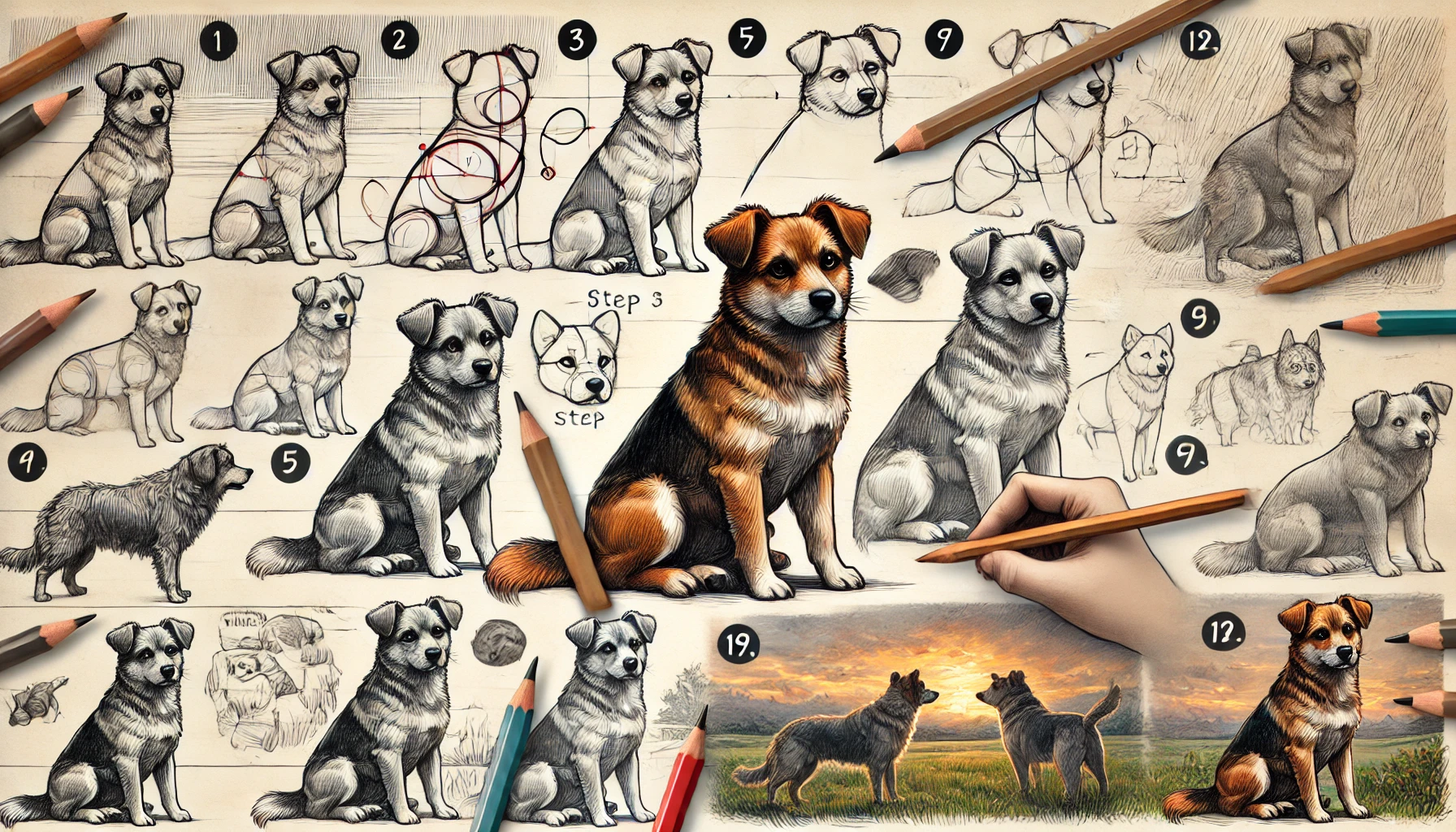
Now you’ve created a stunning dog drawing—combining structured sketching with detailed realism! Whether you prefer cartoon–style, semi–realistic, or ultra-realistic art, this guide ensures an amazing result.
📌 Practice different dog breeds to master various textures and features!
🐶 Happy Drawing! 🖊️🎨
🧐 FAQs (Frequently Asked Questions)
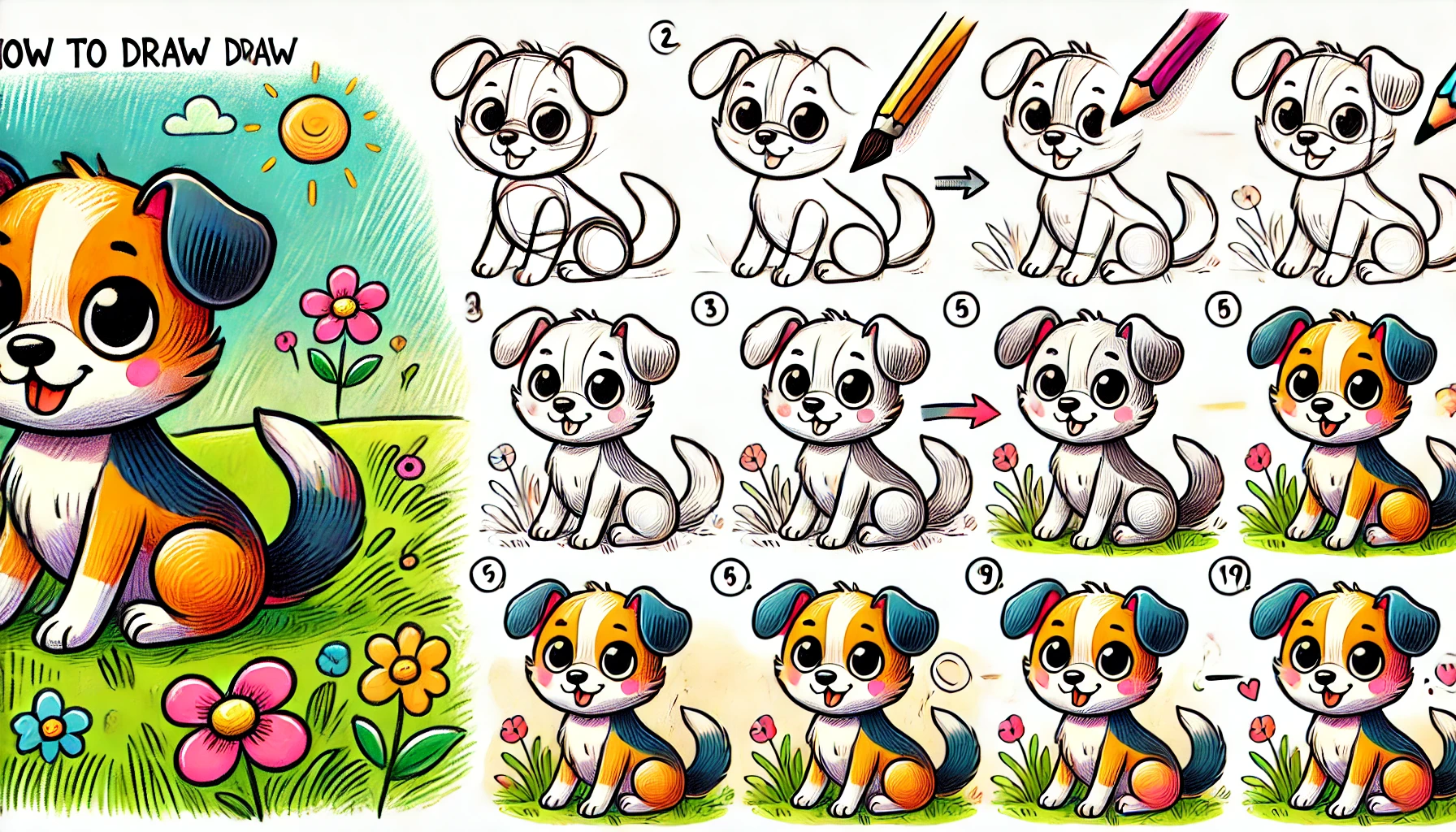
1. What are the best tools for dog drawing?
For beginners, pencils (HB, 2B, and 4B), erasers, fine liners, and blending stumps are great choices. Digital artists can use Wacom tablets, Procreate, or Photoshop.
2. How can I improve my dog drawing skills?
Practice regularly by drawing different breeds, studying real-life dog photos, and experimenting with fur textures, shading, and expressions.
3. Which dog breeds are easiest to draw?
Labradors, Beagles, and Golden Retrievers have simple shapes and fur patterns, making them great for beginners.
4. How do I make my drawing look realistic?
Use layered shading, detailed fur strokes, and highlights in the eyes and nose to achieve a lifelike effect.
5. Can I use reference images?
Absolutely! Reference images help capture proportions, expressions, and unique breed features accurately.
6. What’s the difference between sketching and inking?
Sketching is the rough outline of your drawing, while inking adds definition and clarity by outlining the final shapes.
7. Should I draw digitally or on paper?
Both are great! Paper drawing improves hand coordination, while digital drawing allows easy corrections and advanced effects.
8. How can I add motion to my dog drawing?
Capture movement by sketching dynamic poses, flowing fur, and slight paw lifts to create action.
9. What’s the best way to shade fur?
Use light, directional strokes and blend with a soft brush or tissue to create a realistic fur texture.
10. Where can I find inspiration for dog drawings?
Look at real dogs, photographs, art tutorials, and animated films for ideas and styles! 🐶✨
-

 SMALL DOG BREEDS4 months ago
SMALL DOG BREEDS4 months agoMerle Chihuahua: A Comprehensive Guide
-

 SMALL DOG BREEDS4 months ago
SMALL DOG BREEDS4 months agoMaltese: A Beloved Companion
-

 Large Breeds4 months ago
Large Breeds4 months agoSamoyeds Hypoallergenic: Closer Look at the Breed
-

 SMALL DOG BREEDS4 months ago
SMALL DOG BREEDS4 months agoMerle Pomeranian: A Adorable Companion
-

 Large Breeds4 months ago
Large Breeds4 months agoStandard Poodle Weight: Country Wise
-

 SMALL DOG BREEDS4 months ago
SMALL DOG BREEDS4 months agoYorkshire Terrier: a Big Personality
-

 MEDIUM BREEDS4 months ago
MEDIUM BREEDS4 months agoAmerican Water Spaniel Colors Chocolate In Crcols:
-

 Terrier Breeds3 months ago
Terrier Breeds3 months agoDog Breeds: by Country & Category














